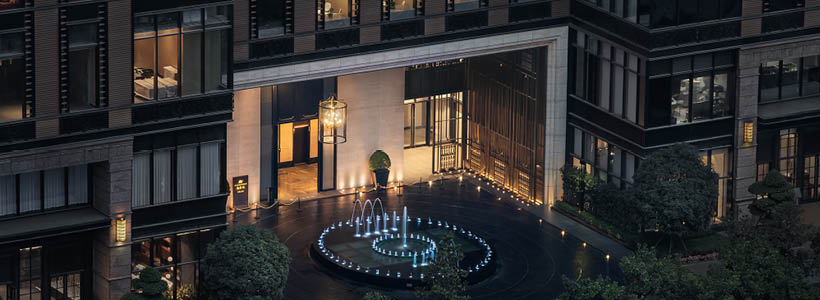
In Chengdu, the old and new blend to create a modern way of life rooted in the East. Local tea houses and whiskey taverns across the street harmoniously coexist; Michelin restaurants and small noodle stalls share the same patrons. Recognized by UNESCO as a city of gastronomy, there is a push to break stereotypes and embrace all cultures.
Xin Rong Ji, a poetic life
Xin Rong Ji has opened a new venue in China Huashang Financial Center, Chengdu, which is the brand’s first restaurant in Southwest China.
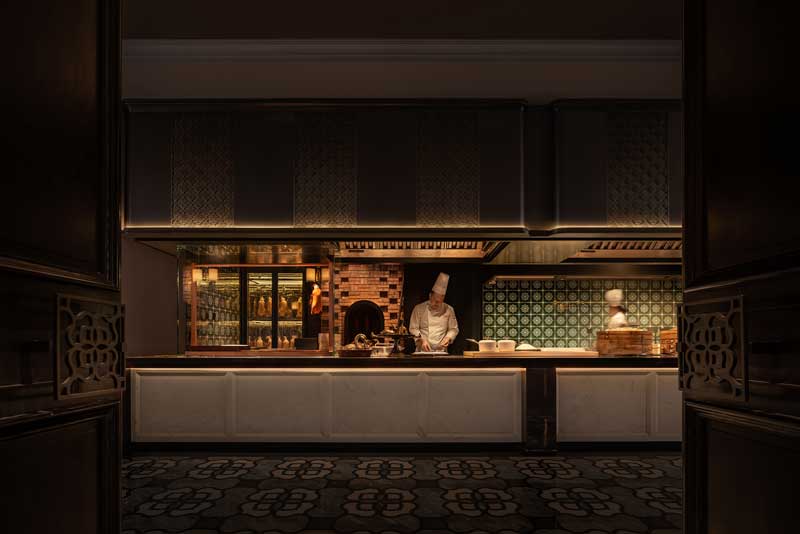
With the accumulation of good quality and taste for years, Xin Rong Ji has continued and retained the classic cuisine of the Rong’s through constant adjustment and in-depth research in its upgrading development. Zhang Yong, the founder, known as Uncle Rong, with the wisdom of a philosopher, has created upscale Chinese cuisine through the core values of making the best cuisine from authentic ingredients, establishing a national brand.
The harmony between the classical and modern
With Oriental sentiments and an international aesthetic perspective, CCD integrates the restrained and elegant style into the classic heritage, telling a story closely related to art, humanity, and social life.
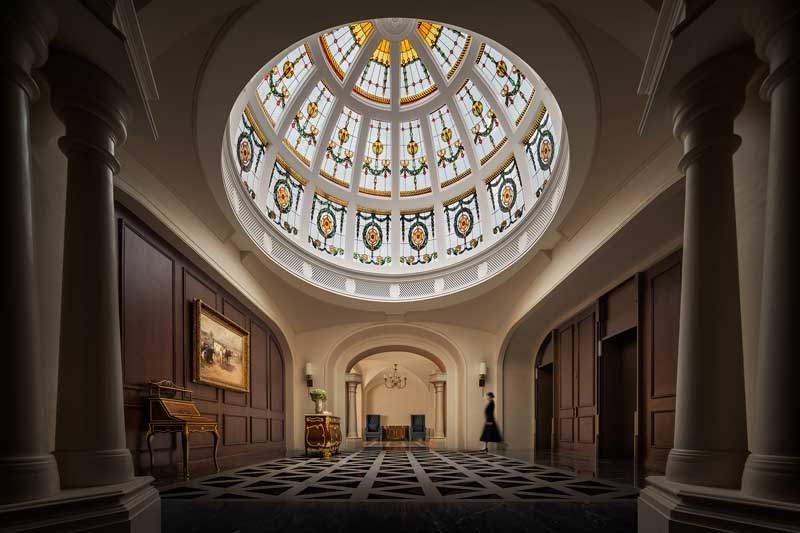
With a modern design approaches and forms, the arched dome elements of classical architecture are combined with shapes and colors to build a visual impact and create an artistic atmosphere like a gallery.
The dome represents the contrast and convergence of the new and the old, the tradition and the rebirth. The arched sequence of scenes creates a strong sense of ritual, frozen in time, like thousands of frames in a movie, stretching endlessly.
The charm of Xin Rong Ji lies in the authentic ingredients, original flavor, and sophistication. In this regard, cooking is the same as interior design. Following the design concept of seeking essence to the best, the designers carefully control the materials, lighting, and circulation, opening a visual and taste journey there.
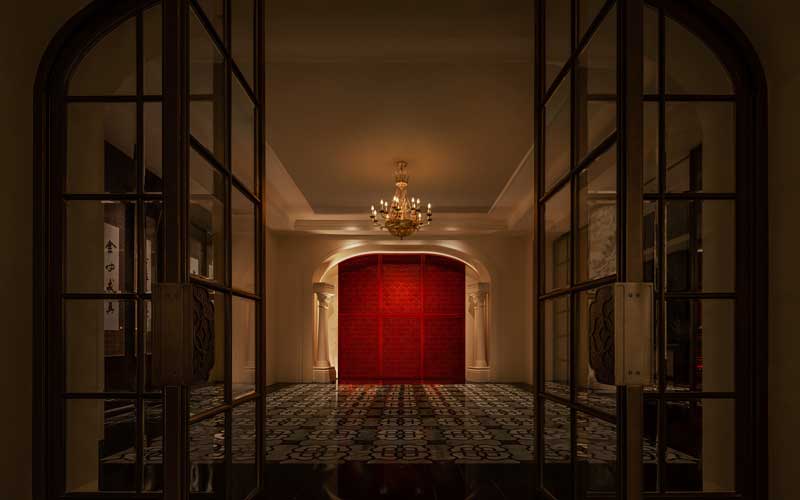
The light in the restaurant is dim and subtle to create a sense of tranquility. Lotus patterns are applied all over the space, such as the facade, the floor, and the finishing touch on the door, revealing the brand’s culture heritage cohesively.
The manual kiln-burnt red bricks exude warmth and passion. The arched tunnel and glass screen elongate the cellar, creating a sense of slow motion in this narrow and deep space. Senses of sight, taste, and hearing slowly penetrate the rich dining vibes.
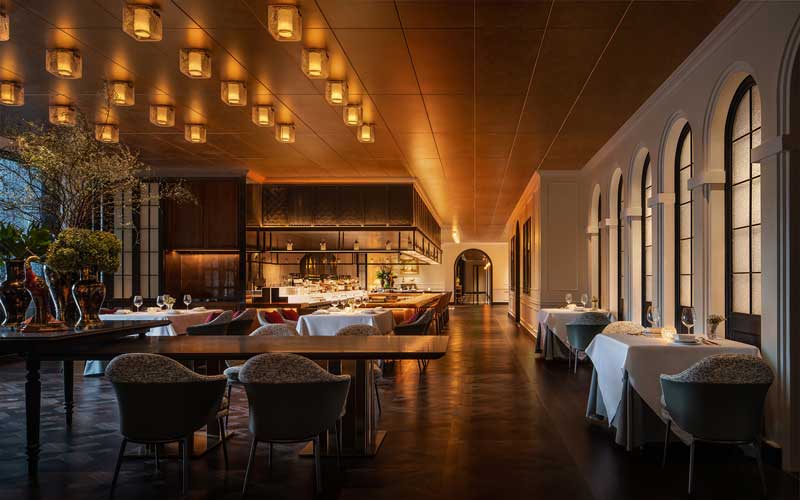
The dining vibes of four seasons, bring varied hints of warmth to patrons
Everything should not be muddling, especially cuisine. The skills of cutting, heating and flavors combination are not only the way Chinese people deal with food but also their cooking aesthetic and social philosophy. Design is the same as cooking, and the unique flair comes from the polishing of people and skills day by day.
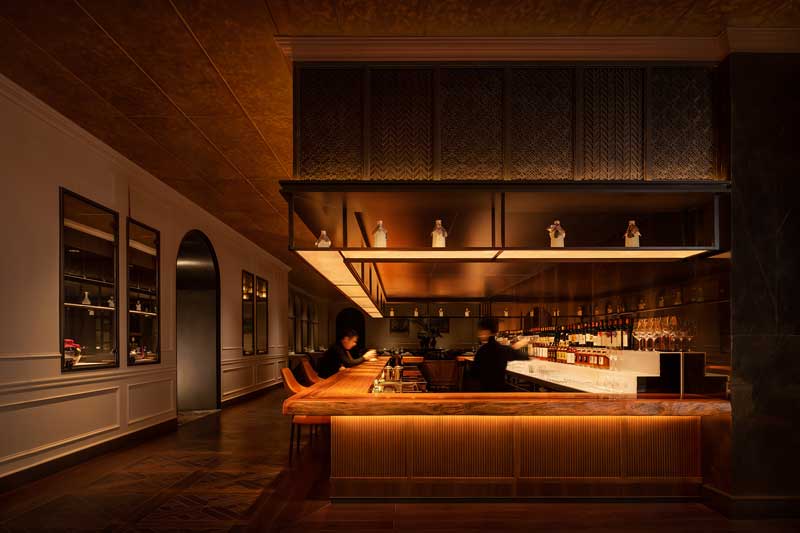
Unpretentious and warm, the elegant arch and the partial orange light unfold the connection with people, life, and aesthetics.
In addition to satisfying the dining needs, the space provides patrons with a relaxed atmosphere to connect emotions. Every dining scene is progressive with emotions, and every seemingly ordinary corner has hidden beauty. Custom furniture and free lighting embellishment result in casual surprises in which a comfortable dining atmosphere spreads immediately.
Geometric blocks in modern architecture are extracted and naturally combined together to achieve the echoing of the modern and classical. Stylish and elegant, the exquisite details enrich the visual experience and the open terrace offers a broad view, allowing patrons to enjoy a relaxing leisure time.
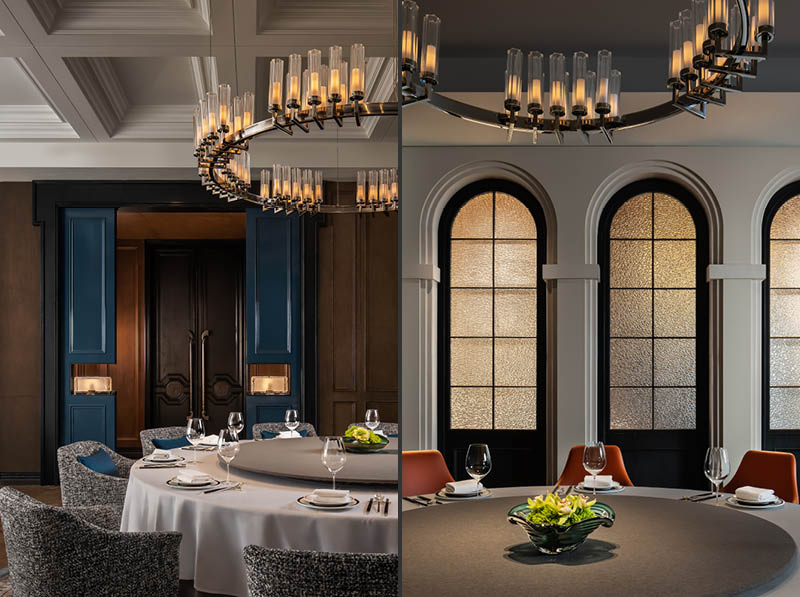
Location: No. 33 Jiaozi Avenue, Wuhou District, Chengdu, Sichuan, China
Interior design team: CCD/ Du Zhiyue, Huang Feng, Tan Haijun, Luo Dujuan, Fang Lihui
Furnishings design: Xin Rong Ji, CCD/ Qi Jing, Huang Xiaoqing, Huang Jieyun
Artwork design: Xin Rong Ji
Lighting Design: CCD/ Zhang Zhiguo, Zhang Qiong
Mechanical and electrical Design: CCD/ Li Jianguang, Yang Jinhao, Tan Quanwen, Feng Xiaoming, Ning Dandan, Yang Chunsheng
VI design & execution: ATG BEYOND/ Chen Danhua, Li Fang, Zeng Lifu, Hong Shanshan from
Photos: Wang Ting


